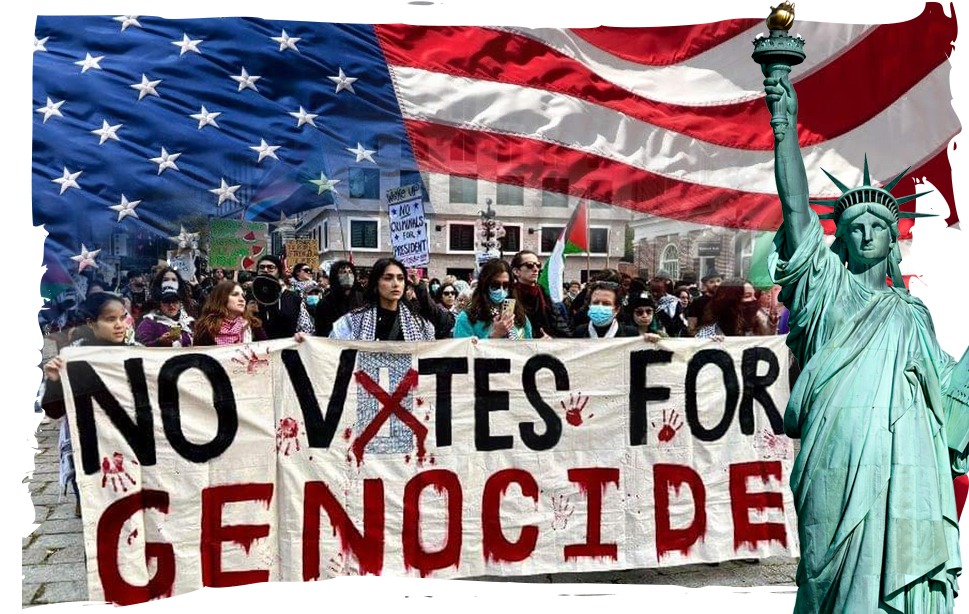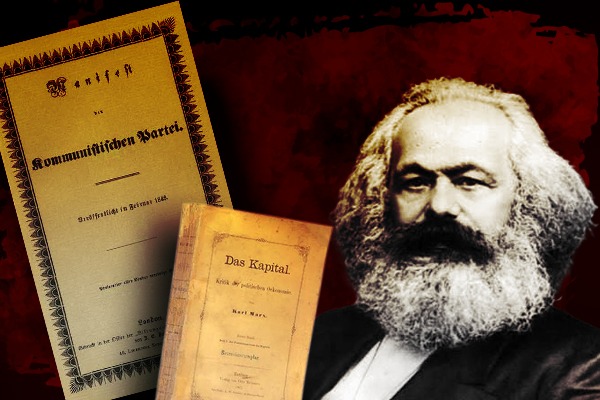The world will observe the 206th birth anniversary of great Karl Marx tomorrow. The man who implemented the Marxism into practice for the first time with the creation of the world’s first socialist state, the USSR, is at 155 and generations have celebrated his birth anniversary few days ago on 22nd April. He is none other than Comrade Vladimir Lenin and this 2024 also marks as the year of his 100th death anniversary. New history of mankind was written after the formation of USSR or Soviet Union and its’ root lies in October revolution of 1917.
A train journey in April 1917 changed the political future of the entire world. After a decade of exile, the return of Comrade Lenin to Russia’s Petrograd (today’s St. Petersburg) on 16th April completing a long journey from Zürich via Germany, Sweden, and Finland changed the entire global scenario within next few decades. Reaching Petrograd he gave a historic speech in front of a massive Bolshevik gathering at the Finland station and later announced the ‘April Thesis’ in two different meetings on 17th April 1917.
Many of us have read John Reed’s ‘Ten days that shook the World’. It is really a treat to read but I strongly feel that everyone should go through the 10 directives of the ‘April Thesis’ to understand how a document can trigger hundreds of thousands people to prepare for a revolution. This ‘April Thesis’ published in the Pravda newspaper and delivered by comrade Lenin in different meetings, made the socialist revolution possible in Russia and the provisional government of Kerensky was overthrown within next six months.

Though the thesis was written mainly to aim all the Bolsheviks living in Russia and those who exiled from Russia but started returning to Russia after the February Revolution but it changed the political position of many Mensheviks and Social Revolutionaries also, and they began to take stand in support of Lenin. Comrade Lenin gave call to the socialist ‘Workers Councils’ formed in different parts of Russia, known as ‘Soviets’ to overthrow the Provisional Government formed during the unrest of February. He made it clear in the April Thesis that the Provisional Government, which had replaced Tsar Nicholas II, was part of imperialism and that all power should be transferred to the Soviets.
He made it clear that the only way to protect the interests of the working people of the country is to build a socialist society in Russia by forming a government under the leadership of the proletariat. During this time, Lenin’s writings in the Bolshevik newspaper Pravda and his stirring speeches at public meetings brought thousands of workers, peasants and even a large section of army personnel in support of Comrade Lenin and the Bolsheviks.
June, July and August were the months of Russian working class upsurge against the Provisional Government of Russia. Workers and peasants were becoming increasingly dissatisfied with food shortages and increasing shortages of other essential commodities. Lenin was able to awaken class consciousness among the workers and peasants. Workers began to blame the rich and influentials for food shortages and their poor living conditions.
Not only this, even the poorest laborers at this time started to call the rich and wealthy as “bourgeois”, “capitalists”, “imperialists” etc. and identified them as their enemies. Such huge was the impact of Comrade Lenin among the Russian working class and we can call it “great awakening of class consciousness”.
The bloody struggle of July 16-20, known in history as the ‘July Days’ was the most crucial event in this three months period which paved the path for overthrowing the Provisional Government three and half months later. This protest movement was even more aggressive and violent than the February movement that ousted the Tsar.

On July 16, a section of the workers and soldiers spontaneously demonstrated in the streets of Petrograd and demanded transfer of power to the Soviets. The next day i.e. July 17, a historic gathering of 500,000 people was organized in the streets of Petrograd with full support of the Bolsheviks. The Provisional Government, backed by the Social Revolutionary and Menshevik leadership, unleashed a violent armed attack on the protesters and hundreds were killed. Call was given for a strike and 400,000 workers participated in the strike called by the Bolsheviks in the city of Moscow alone.
At this time, Alexander Kerensky became the head of the Provisional Government on July 21st, and General Kornilov was appointed Commander-in-Chief of the Army on July 18th. Kornilov ordered his army under the leadership of Alexander Krymov to march towards Petrograd as Kerensky had instructed him to control the unrest in Petrograd. Kerensky reversed the order after a few days, sensing a possible mutiny in the army but Krymov continued to advance towards Petrograd with his army as Kornilov decided to march on. It was clearly understood that Kornilov was attempting a coup d’etat. It happened in the latter half of August. The Bolsheviks and Mensheviks faced the army together before Petrograd and convinced them to stop. This incident proved the massive influence of Bolsheviks among the telegraph workers, railroad workers and in the army.
Kornilov’s mission failed and the popularity and support for the Bolsheviks among the masses increased manifold. On September 1, the provisional government was declared as the Russian Republic, with Kerensky still in power.
The popularity and acceptance of Comrade Lenin and the Bolsheviks began to spread even to the remote areas of Russia. On August 31, the Petrograd Soviet and on September 5, the Moscow Soviet adopted the Bolshevik Resolutions as a whole. In distant cities like Bryansk, Samara, Kiev, Saratov, Tashkent, Minsk – the popularity of the Bolsheviks increased dramatically and they also started to accept the Bolshevik line as a whole.
The stage of revolution was ready. The number of Bolshevik Party members also increased to 200,000 which was only 24,000 in the early days of 1917. On October 23 (October 10 according to the old Russian calendar), the meeting of the Central Committee of the Bolsheviks took place. In this meeting, Lenin passed the line to carry out armed insurgence for immediate seize of power by a vote of 10-2 though he failed to do so in the previous meeting of the central committee. During this time the Bolsheviks also formed a ‘Revolutionary Military Committee’ consisting of pro-Bolshevik army personnel, sailors and workers.
Realizing that the revolution is imminent and it is only a matter of time, Kerensky’s soldiers attacked the offices of all left-leaning newspapers on November 6 (October 24), burned many of them and closed down the city of Petrograd. Next morning, the Red Army in the name of the ‘Revolutionary Military Committee’ began to take over the city of Petrograd. A fleet of Bolshevik sailors arrived in Petrograd harbor on the same day on November 7. They started taking over government offices one after another. By evening, the Winter Palace in the capital city of Petrograd, which was the headquarters of the Kerensky government, was surrounded by the armed Bolshevik forces consisting of around 40,000 people.
Later in that night, all the ministers, administrative heads and security guards in the Winter Palace surrendered. Kerensky, however, had already escaped from the Winter Palace by arranging a Renault car from the American Embassy. The ‘Revolutionary Military Committee’ took full control of the Winter Palace by around 2 am in the midnight.

Lenin announced that the Provisional Government had been overthrown and that the Revolutionary Military Committee, or Bolsheviks, had seized the power. Lenin ultimately became the head of state after several requests from other Bolshevik leaders.
This event of revolution completely changed the future of the world. At the background of October revolution, Soviet Union or the USSR was formed in 1922 which later defeated the fascism lead by Hitler and Mussolini to save the human civilization. I have heard many senior aged comrades to say “Stalin and Soviet was there, that’s why we are still here”. Post World War II, countries from all part of the globe started to align themselves with the Soviet lead Eastern Bloc, also known as the Socialist Block. A time came when half of the world turned red. Upholding the revolutionary red flag, the people of the whole world started dreaming of liberation from all kind of exploitation.








